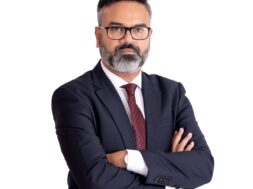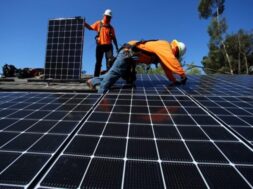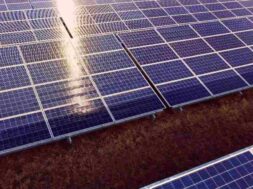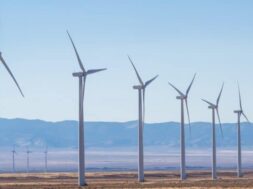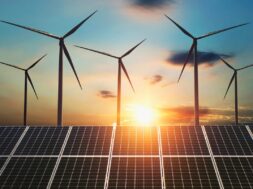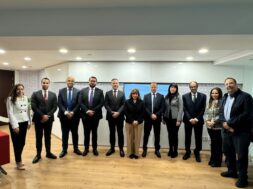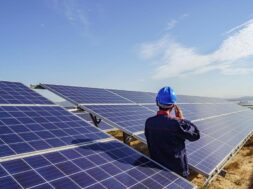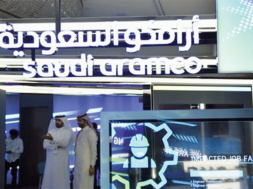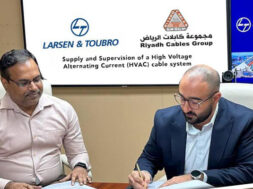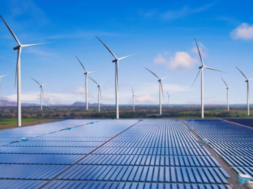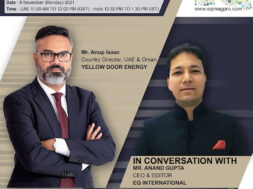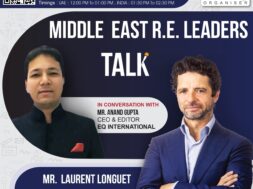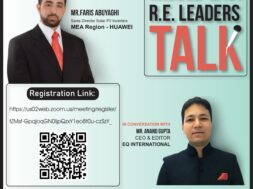
Interview With Anup Isaac Country Director, UAE Yellow Door Energy
Interview with Anup Isaac Country Director, UAE Yellow Door Energy
Q.1. Please share your life journey. What are your professional key learning’s? What have been your key leadership achievements?
As the Country Director for the UAE at Yellow Door Energy, I work with a dedicated team of solar energy experts to help businesses switch to clean energy and save money through solar agreements. Since our company’s founding 5 years ago, we have been successful in securing premier customers such as Nestlé Middle East, Unilever Middle East, Landmark Group, Hira Walraven and Hira Industries.
My journey in renewable energy started in 2012, and prior to that I worked in the construction and manufacturing industries. As an engineer with an MBA, I have always been attracted to careers that enabled me to combine my engineering education and business acumen.
Working as the country director for the leading solar developer in the region, everyday I get to apply my technical know-how and implement my MBA training. In addition, I have learned a lot about international business by working in the UAE alongside the 200 plus different nationalities residing here[1].
Q.2. In respect to your Company currently how many renewable assets does this company has? What are the projects in pipeline and what is the plan for the future?
Yellow Door Energy currently has over 110 megawatts of solar assets under development in the Middle East and South Asia. Our customers range from global multi-national companies such as Carrefour/Majid Al Futtaim to leading local players such as Al Nabooda Automobiles.
The COVID pandemic has accelerated the growth in our pipeline. As the pandemic persisted, we received more inquiries from businesses interested in our solar agreements in order to save money and put solar on their roofs, all without any upfront investment.
In the near-term future, we aim to maintain our market leadership in the UAE and Jordan, while solidifying our presence in Pakistan and expanding to other GCC countries.
Q.3. What are all countries you were operating and what are the plans with respect to each country?
We operate in the UAE, Jordan, Pakistan, Saudi Arabia and Bahrain.
For our core markets in the UAE and Jordan, we want to maintain market leadership.
Our Pakistan operations are growing quickly, so we look forward to supporting businesses outside of Lahore and surrounding regions.
Saudi Arabia is a vast market, and we hope to make more inroads once the net billing law is implemented.
We are constantly monitoring different markets for the latest policy development and technology advancements.
Q.4. What is the market outlook and what are the top 5 Opportunities and top 5 Challenges can be in terms of Land,PPA,Bankability and Power Sale Agreement according to you?
The market outlook is strong in our core markets. We are constantly monitoring potential new markets and assessing new opportunities.
In my view, top 5 challenges in distributed solar are:
- Electricity subsidies which are keeping grid electricity tariffs artificially low
- Some utilities imposing caps or quotas on renewable energy projects, hindering the market’s development
- Signing commercially attractive deals that are bankable (acceptable to banks for long-term financing)
- Businesses hesitating to make long-term commitments due to lack of awareness of the benefits of implementing solar today
- A large number of solar companies entering the market with sub-standard solar experience, poor health and safety practices, lackluster financial backing, etc. that may tarnish the whole industry’s reputation
On the flip side, there are many opportunities in this industry. The top 5 opportunities are:
- The declining cost of solar makes Yellow Door Energy’s value proposition more attractive
- The new markets that are opening have a strong need for reliable energy
- New technologies, such as batteries, open up solar to new customers
- The COVID pandemic accelerates the renewable energy transition as cost reduction and energy independence become top of mind
- Sustainability is now an integral part of leading organizations’ and governments’ agendas
Q.5. Kindly comment on the Debt & Equity Finance. Availability about the projects. What are the targets you have been set for the coming 3 to 5 years?
There is a significant amount of capital being allocated towards sustainable investments, particularly solar energy. Solar investments have outperformed other investments during the pandemic. Both lenders and investors (debt & equity) are seeking out opportunities with high returns to deploy capital.
Q.6. What are your plans for the Utility Scale Plants and Rooftop Distributed Solar Plants?
Our company provides distributed solar, whether they be rooftop, carport or ground-mount. We aim to be the sustainable energy partner for leading businesses in our markets.
Q.7. Due to Grid Instability. What is the outlook for the Hybrid projects and Energy Storage?
The declining cost of storage makes it an attractive option to offer 24-hour electricity to businesses, especially those located in places with unreliable electricity and/or limited access to the national electricity grid. However, a higher share of renewables in the grid will require smarter grid integration and support. Both storage and grid support will drive significant growth for battery solutions in the years ahead.
Q.8. What is the role of Hydrogen in the Renewable Energy?
Hydrogen is still in the early stages and has to come down in cost. However, it has a strong potential to fill a role in enabling powering processes with renewable power. Examples of these processes include industrial heating, transport applications, long-term storage etc.
Q.9. What are the rates at which Debt Financing for the projects in your region?
Financing costs vary from market to market. Across our region, the range is from 4-9% depending on the currency.
Q.10. Being a leader how you really transformed your company your team building and adding value to the Industry?
Q.11. What kind of technologies you prefer:-
| I. II. III. |
In terms of Module (Poly or Mono Perc) and your views on Technology road map adoption. In terms of Inverter Central or String Inverter you were using for the utility scale project. In terms of Trackers Is it viable in the region you are building up your plant. |
- Move from Poly to Mono Perc and Bifacials. Higher efficiently modules and increase in power bin
- For distributed solar, we predominantly use string inverters. However for wheeling projects, depending on the size of the land, central inverters are considered
- Yes – depending on the topography of the projects/land
Q.12. What are the kind of challenges and What are the technologies you are deploying for the efficient Asset Management. Are there any grid curtailment in your region and How is the entire ecosystem efficiently managing the renewable energy power plant on the ground?
All our plants are equipped with SCADA systems and sensors. Through our in-house Sustainable Energy Asset Management System (SEAMS), we monitor and optimize the performance of our solar assets across the Middle East and Pakistan. We can trouble-shoot in real-time and diligently manage the cleaning schedules of our solar plants to ensure they are at their peak performance.
Q.13. Your key message for the attendees.
We encourage all businesses to consider solar as a viable option to save money and reduce carbon emissions. The technology has been proven and it is time to join the sustainable energy transition.
